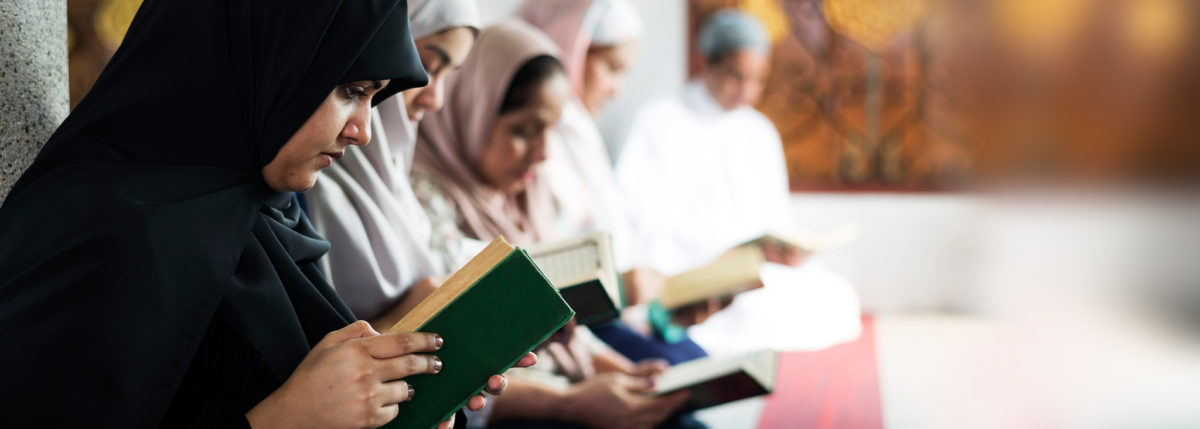Diabetes + Ramadan: Here’s How a Few People Are Observing
Ramadan, the ninth and most sacred month of the Islamic calendar, is observed by the world’s 1.6 billion Muslims. Because the Muslim calendar is lunar—based on the phases of the moon—Ramadan shifts in the standard Gregorian calendar.
While those who do not observe the month often associate Ramadan with fasting from food alone, Muslims observe the holy month in a variety of ways including community prayer, personal contemplation, studying of the Quran, a focus on charity and generosity including monetary donations, and more time with loved ones. Fasting is also not only for food; from dawn to sunset, Muslims also fast from liquids, smoking cigarettes and engaging in sexual activity. They also try to minimize negative thoughts and emotions, including complaining and gossiping.
For people with diabetes, especially those who are insulin-dependent or on any other blood-sugar-lowering medications, fluctuating blood sugar levels can make observing the fasting from food element of Ramadan challenging. While there are special exemptions for those who are pregnant, nursing, menstruating, ill, traveling, or who are young children or the elderly, many Muslims who have special considerations for fasting find ways to participate as they can.
Navigating fasting with diabetes
Fasting affects each individual differently, whether they have diabetes or not. Before fasting, it’s important that people consult with a trusted healthcare provider who will be able to help adjust medication doses and create a plan of action for how to fast safely. While fasting in religious observance is not the same as fasting for health reasons or personal preference, learnings can be applied from intermittent fasting strategies. Planning ahead, changing medication dosages and paying very close attention to blood sugar levels is key.
For religious observance, the parameters of the fast change based on geographic location and year, as fasting is observed from dawn to sunset. Because Ramadan is based on a lunar calendar, it shifts by 11 days in the Gregorian calendar, so Ramadan can fall in any season. This means that the length of the fast can change drastically between shorter winter days or longer summer days.
Hydration is also a key consideration, as fasting for Ramadan includes abstaining from any liquids, but hydration helps maintain healthy blood sugar levels. Many Muslims will try to drink as much water as possible before dawn.
Observing Ramadan in the Gaza Strip, Palestine
Mohammed Seyam, a medical student living in Gaza, says that despite having type 1 diabetes, he fasts completely during Ramadan. “I sleep during morning time, 5 am to noon so I just have six hours to fast,” Seyam says. He also points out that fasting for the holy month can be very different based on access to resources and diabetes technology.
“There are no [insulin] pumps in the Gaza Strip. There are no [continuous glucose monitor] sensors,” Seyam explains. “If you want a sensor, you’d have to ship it from other countries.” Unfortunately, like many other countries including the U.S., Seyam says that insulin affordability is also a big issue, which impacts not only safety while fasting, but safety living as a person with type 1 diabetes in general.
“If you have insurance, you pay less than one dollar to get the vial.” Without insurance, Seyam explains that Gazans would have to pay 20 U.S. dollars. “It’s hard for people to buy these things because of the unemployment rates. There are no jobs.” In Gaza, the unemployment rate sits at almost 50 percent.
Seyam says that although Gazans with health conditions such as diabetes have permission from God to break their fast, stigma is weaved into the fold of Gaza’s social fabric. “People want to fast during Ramadan although they know it is risky for them to fast. But we will just do it because we don’t want anybody to talk about us that we did not fast. We don’t want anyone to mention us badly,” Seyam shares. He also reminds others that people battling health conditions shouldn’t feel pressured to participate in this way. “We can break a fast because it affects our health and your health is a priority here.”
Alternative ways to observe Ramadan without fasting
Instead of fasting, Seyam says that people can donate money to people living in poverty. “For each day, there’s a specific amount of money that is determined by the Mufti,” Seyam explains. The set price of donation differs each year.
For Eritrea Mussa Khan, content creator and co-host of Diabetics Doing Things based in Texas, observing Ramadan extends beyond fasting. Eritrea says that if people with diabetes can’t participate in the fast, reading the Quran is another great way to participate. “Usually during Ramadan, we get together at the masjid or at the mosques in Dallas and Irving, where I live. My families are really a large part of the community and so we go to the masjid at nighttime,” she shares.
“There are other ways that I’m trying to practice Ramadan by being as nice as possible,” Mussa Khan says. Mussa Khan recalls when someone said something mean to her online. She replied online and later deleted the comment after reflecting on the symbolism behind Ramadan. “The purpose of Ramadan is to feel the humility of people who cannot afford to eat or drink water,” Mussa Khan explains.
For information on navigating other celebrations and holidays while living with diabetes, visit our resource page.
For more information on diabetes and Ramadan, check out the Ramadan Pocket Chart below.
